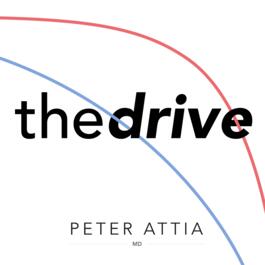
Matt Kaeberlein, Ph.D.: The biology of aging, rapamycin, and other interventions that target the aging process
Matt Kaeberlein is globally recognized for his research on the biology of aging and is a previous guest on The Drive. In this episode, Matt defines aging, the relationship between aging, chronic inflammation, and the immune system, and talks extensively about the most exciting molecules for extending lifespan. He discusses the current state of the literature of testing rapamycin (and rapalogs) in animals and humans, including Matt's Dog Aging Project, and provides insights into how we can improve future trials by conceptualizing risk, choosing better endpoints, and working with regulators to approve such trials. He also examines the connection between aging and periodontal disease, biomarkers of aging, and epigenetic clocks. Finally, they explore some of the biological pathways involved in aging, including mTOR and its complexes, sirtuins, NAD, and NAD precursors. We discuss: The various definitions of aging [3:25]; The relationship between disease and the biology of aging [16:15]; Potential for lifespan extension when targeting diseases compared to targeting biological aging [22:45]; Rapamycin as a longevity agent and the challenges of targeting the biology of aging with molecules [32:45]; Human studies using rapalogs for enhanced immune function [39:30]; The role of inflammation in functional declines and diseases of aging [50:45]; Study showing rapalogs may improve the immune response to a vaccine [56:15]; Roadblocks to studying gero-protective molecules in humans [1:01:30]; Potential benefits of rapamycin for age-related diseases—periodontal, reproductive function, and more [1:12:15]; Debating the ideal length and frequency of rapamycin treatment for various indications like inflammation and longevity [1:21:30]; Biomarkers of aging and epigenetic clocks [1:29:15]; Prospects of a test that could calculate biological age [1:37:45]; The Dog Aging Project testing rapamycin in pet dogs [1:42:30]; The role of the mTOR complexes [1:58:30]; mTor inhibitor called Torin2, mitochondrial disease and other potential pathways [2:09:45]; Catalytic inhibitors, sirtuins, and NAD [2:19:15]; NAD precursors: help or hype? [2:28:15]; and More. Learn more: https://peterattiamd.com/ Show notes page for this episode: https://peterattiamd.com/MattKaeberlein2 Subscribe to receive exclusive subscriber-only content: https://peterattiamd.com/subscribe/ Sign up to receive Peter's email newsletter: https://peterattiamd.com/newsletter/ Connect with Peter on Facebook | Twitter | Instagram.
From "The Peter Attia Drive"




Comments
Add comment Feedback